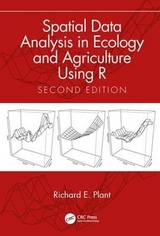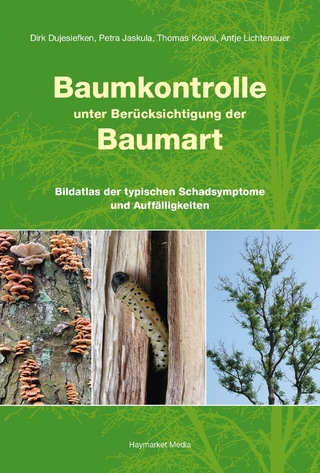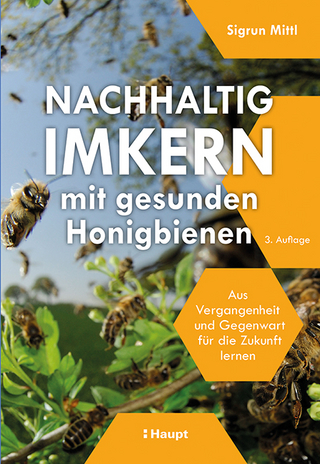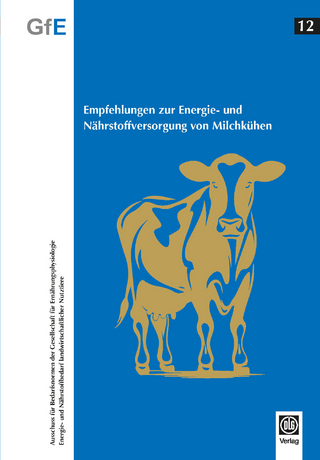
Spatial Data Analysis in Ecology and Agriculture Using R
Crc Press Inc (Verlag)
978-1-4398-1913-5 (ISBN)
- Titel erscheint in neuer Auflage
- Artikel merken
Based on the author’s spatial data analysis course at the University of California, Davis, the book is intended for classroom use or self-study by graduate students and researchers in ecology, geography, and agricultural science with an interest in the analysis of spatial data.
Working with Spatial Data
Analysis of Spatial Data
Data Sets Analyzed in This Book
R Programming Environment
R Basics
Programming Concepts
Handling Data in R
Writing Functions in R
Graphics in R
Other Software Packages
Statistical Properties of Spatially Autocorrelated Data
Components of a Spatial Random Process
Monte Carlo Simulation
Review of Hypothesis and Significance Testing
Modeling Spatial Autocorrelation
Application to Field Data
Measures of Spatial Autocorrelation
Preliminary Considerations
Join-Count Statistics
Moran’s I and Geary’s c
Measures of Autocorrelation Structure
Measuring Autocorrelation of Spatially Continuous Data
Sampling and Data Collection
Preliminary Considerations
Developing the Sampling Patterns
Methods for Variogram Estimation
Estimating the Sample Size
Sampling for Thematic Mapping
Design-Based and Model-Based Sampling
Preparing Spatial Data for Analysis
Quality of Attribute Data
Spatial Interpolation Procedures
Spatial Rectification and Alignment of Data
Preliminary Exploration of Spatial Data
Data Set 1
Data Set 2
Data Set 3
Data Set 4
Multivariate Methods for Spatial Data Exploration
Principal Components Analysis
Classification and Regression Trees (aka Recursive Partitioning)
Random Forest
Spatial Data Exploration via Multiple Regression
Multiple Linear Regression
Building a Multiple Regression Model for Field 4.1
Generalized Linear Models
Variance Estimation, the Effective Sample Size, and the Bootstrap
Bootstrap Estimation of the Standard Error
Bootstrapping Time Series Data
Bootstrapping Spatial Data
Application to the EM38 Data
Measures of Bivariate Association between Two Spatial Variables
Estimating and Testing the Correlation Coefficient
Contingency Tables
Mantel and Partial Mantel Statistics
Modifiable Areal Unit Problem and Ecological Fallacy
Mixed Model
Basic Properties of the Mixed Model
Application to Data Set 3
Incorporating Spatial Autocorrelation
Generalized Least Squares
Spatial Logistic Regression
Regression Models for Spatially Autocorrelated Data
Detecting Spatial Autocorrelation in a Regression Model
Models for Spatial Processes
Determining the Appropriate Regression Model
Fitting the Spatial Lag and Spatial Error Models
Conditional Autoregressive Model
Application of SAR and CAR Models to Field Data
Autologistic Model for Binary Data
Bayesian Analysis of Spatially Autocorrelated Data
Markov Chain Monte Carlo Methods
Introduction to WinBUGS
Hierarchical Models
Incorporation of Spatial Effects
Analysis of Spatiotemporal Data
Spatiotemporal Cluster Analysis
Factors Underlying Spatiotemporal Yield Clusters
Bayesian Spatiotemporal Analysis
Other Approaches to Spatiotemporal Modeling
Analysis of Data from Controlled Experiments
Classical Analysis of Variance
Comparison of Methods
Pseudoreplicated Data and the Effective Sample Size
Assembling Conclusions
Data Set 1
Data Set 2
Data Set 3
Data Set 4
Conclusions
Appendices
Review of Mathematical Concepts
The Data Sets
An R Thesaurus
References
Index
| Zusatzinfo | Approx 350 to 375 equations.; 28 Tables, black and white; 165 Illustrations, black and white |
|---|---|
| Verlagsort | Bosa Roca |
| Sprache | englisch |
| Maße | 178 x 254 mm |
| Gewicht | 1293 g |
| Themenwelt | Weitere Fachgebiete ► Land- / Forstwirtschaft / Fischerei |
| ISBN-10 | 1-4398-1913-0 / 1439819130 |
| ISBN-13 | 978-1-4398-1913-5 / 9781439819135 |
| Zustand | Neuware |
| Haben Sie eine Frage zum Produkt? |
aus dem Bereich



